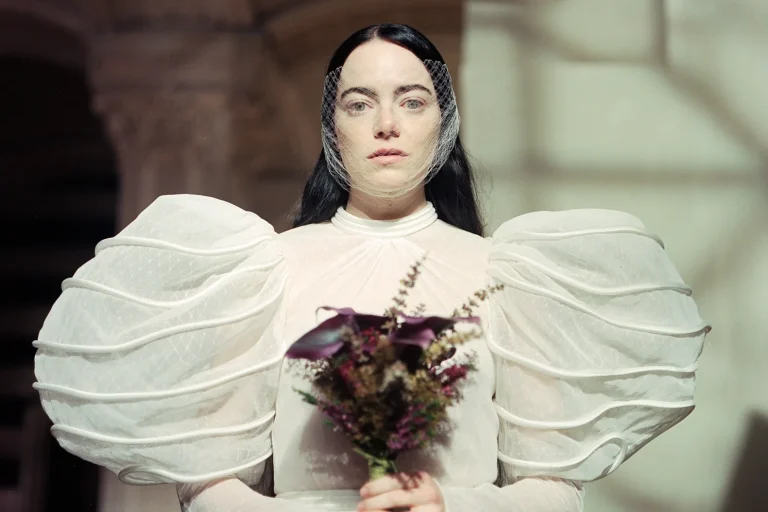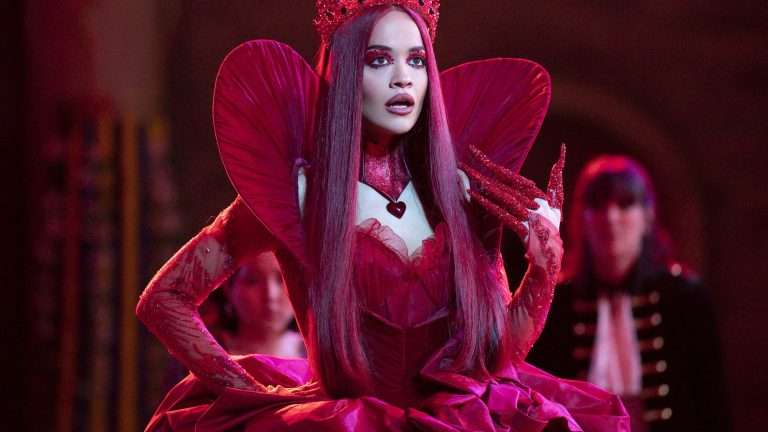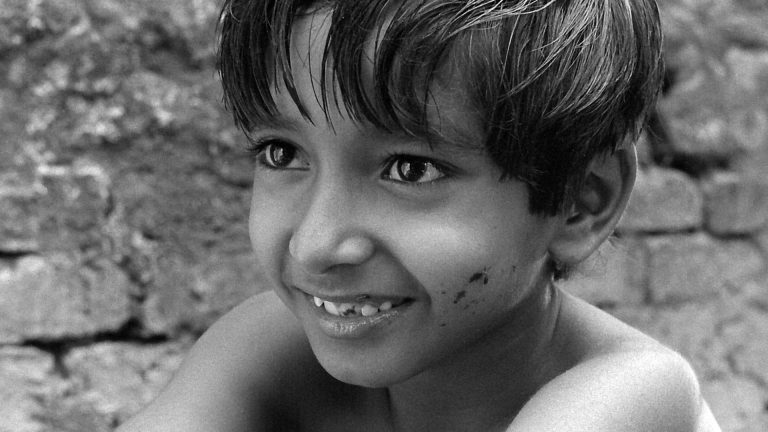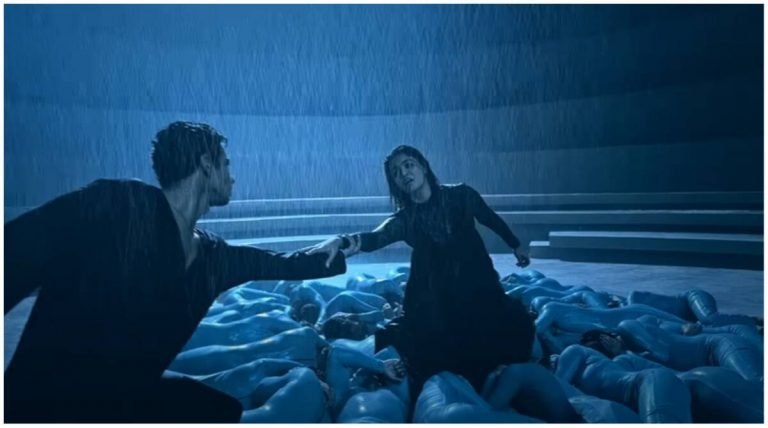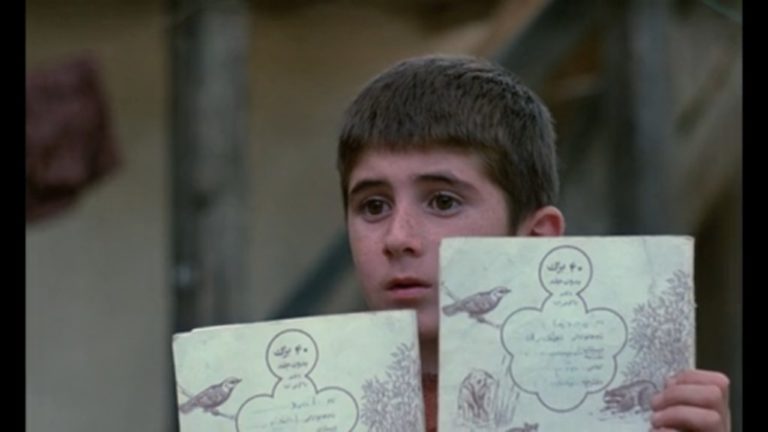Dune: Part Two showcases Denis Villeneuve’s mastery: Movies are generally said to have either a small scope, tracing a character’s mental or spiritual journey while going inward with the narrative approach, or a large scope that encapsulates the ethos or zeitgeist of a particular era or a world. Crafting a world with a well-defined smaller scope can particularly become daunting while telling a story in the landscape of sci-fi. After all, the tranquility offered by the avenues of spaceships, interstellar travel, and futuristic speculation can very well negate the substantive internal journey of a character.
The genius of Denis Villeneuve remains in how he is able to craft worlds that excel at both. His films tell stories using heavy reliance on visualization to draw the viewer into the imaginary world while provoking them to think in a particular line of thinking. Among the most notable techniques is the objective use of color to communicate the mood and the meaning. In doing so, Villeneuve deftly splits and unifies the subjective and the objective, the internal and the external; and thus he makes it work. His genius remains in how he implements both the scopes in his sweeping pictures. Enough for the audience to feel beyond the layers of artifice and textures. It’s what makes the sci-fi films he’s made thus far transcend their grandiose scale.
Set in the aftermath of his first “Dune” film, the sequel promises to build upon Frank Herbert’s world that has long been described as un-filmable. The story moves boldly as it picks up right where we had left off in the desert with its lead hero’s fate dangling in the uninhabitable barren land. The art of cinematic spectacle comes back alive with a thundering craft in “Dune: Part Two,” and it makes the wait worth it. The first part made neat introductions and sketches in Paul’s (Timothée Chalamet) back story as the beloved and only son of duke Arrakis, Leto (Oscar Isaac), and his concubine, Lady Jessica (Rebecca Ferguson). But the puzzle begins to move when the royals, with orders from the supreme Emperor, vacate their home planet.
As they step into an unannounced battle with the pallid, villainous House Harkonnen, Leto ends up losing his life, leaving the fate of the clan to young Paul. With him and Lady Jessica out into the desert, they must now confide in making uneasy allies with a group of Fremen, the planet’s indigenous population. Among these are Chani (Zendaya) and Stilgar (Javier Bardem), who personify the Fremen’s varying ideas about liberation. Stilgar is a man of faith who quickly starts to believe that Paul is the messiah they had all been waiting for. Chani, on the other hand, believes that it should be a Fremen who must lead them to freedom. But Paul and Chani eventually move past the bursting knitted-brow skepticism to give their inevitable romance a little frisson.
As Jessica and Paul learn more about Fremen history and culture, the latter threatens primarily to lead it rather than dismantling it. There’s a big difference. Stiglar and some other Fremens feel much of the mythology points to Paul’s savior role in the face of Paul’s attempts at trying to blend into the group. Meanwhile, the leader of House Harkonnen, the Baron, spends much of his time killing his minions, giving out menacing orders to reiterate the influence of their house from a tub of what looks like crude oil. If this requires a rather psychotic nephew, Feyd-Rautha (Austin Butler), to take up the challenge, then so be it.
While the battle between the Fremen and the Harkonnens for the control of Arrakis serves as the backdrop for “Part Two,” Paul’s arc from a nervous young man to a potential leader plays out in the foreground. As Paul passes the tests put in front of him by the Fremen while taking on the tribal name of Muad’Dib, he vows vengeance against the Harkonnens, who were responsible for his father’s death.
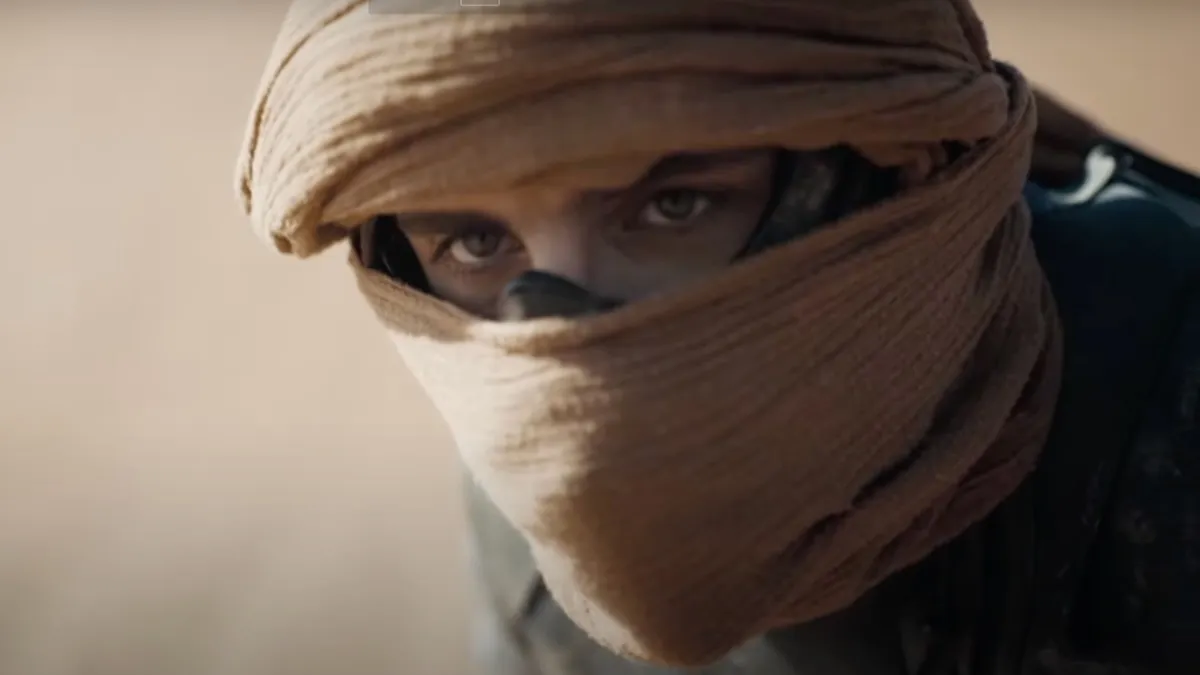
Feyd-Rautha becomes Paul’s challenger, but he also serves as an admonitory symbol of what Paul may eventually become. Their paths may differ for now, despite their journeys and the tests they share bearing a striking congruity. But the ultimate arc Paul leads comes across as a red herring of what he may end up doing given the absolute power he holds – something far more baleful than his counterpart.
That’s precisely what notches up the smaller scope of the story with its towering setting. Paul may have begun as an aristocrat, who then becomes a guerrilla and a crusader whose ultimate destiny weighs as heavily on him as any crown ever would. But the enjoyably engrossing world is also one that reverberates with sentiments of belief and doubt that emerge out of the survival and struggle to live in the uninhabitable. The idealism of people like Stilgar arises out of the nihilism of the world around them. The seemingly fantastical realm of “Dune” sits on the hope of prophecies, just like the huge sandworms that travel beneath Arrakis’s surface and also produce the planet’s invaluable resource. Some fight to be free. Many others pray for a messiah.
Villeneuve’s adaptation of Herbert’s world invites curiosity and an overwhelming sense of wonder at every point of the way. Along with screenwriter Jon Spaihts, he injects a relevant dose of religious fanaticism to make the story timely. While the exceptional technical craft on display amplifies and extends a sense of continuous battle and danger from the first film, it’s the quiet moments of moral revelation that glue the ethos of the grand epic together.
The browns and blues of the desert feel arid as much as they feel grounded and tactile. Contrary to this, the Harkonnen world is so devoid of color that even the poppy fireworks feel colorless. The perspective gaze with which we see Paul gradually shifts as he turns more powerful. Not only does the film succeed at capturing the enormous scale of the dense palimpsest, but it actively builds upon creating the kind of scope required to make the narrative threads work. In many interviews, Villeneuve has cited David Lean’s 1962 epic “Lawrence of Arabia,” with its own blue-eyed hero, as an influential touchstone behind the “Dune” films. Much of the criticisms attributed to Herbert’s novel are about its white savior complex and the anguished colonialist history it evokes.
For all the challenges the director has faced in adapting it to the screen, none seemed more insurmountable than getting the nuanced complexity of Herbert’s male lead right, whose power is less than triumphant. In “Part Two,” he channels that tension through Lady Jessica’s ambitions and pitches it against the belief of a common Fremen. Much of Villeneuve’s filmography deals with protagonists who struggle to choose what they believe in. Their purpose comes secondary to believing in a path they feel like had already been destined upon them.
One could cite Louise in “Arrival,” whose work makes her realize she can’t stop the passage of time just like she can’t stop herself from ever feeling pain, or Officer K in “Blade Runner 2049” who wants to believe himself to be a free, loved replicant but finds his purpose only by the end after having thought that life was never meant to have any innate meaning. By letting an ‘oppressor’ choose what he believes in, Villeneuve roots the emotional crux of “Dune: Part: Two” into the act of believing in itself. While Paul, persuaded by his mother and the prophetic visions, may think becoming a messiah would yield him ultimate power, the film makes a point in how real power lies in the belief for a cause.
Even if it’s one that leads to an ever-changing experience that doesn’t come out the way one wants it to. That’s the whole point. The tragedy comes crashing in when you realize that Paul too remains as unsure of his own destiny as you are. Chani, another Fremen, realizes this, too, as it’s reinforced in the last shot of the film. Because she was the only one who loved him for who he was as a person rather than for his messianic figure.


